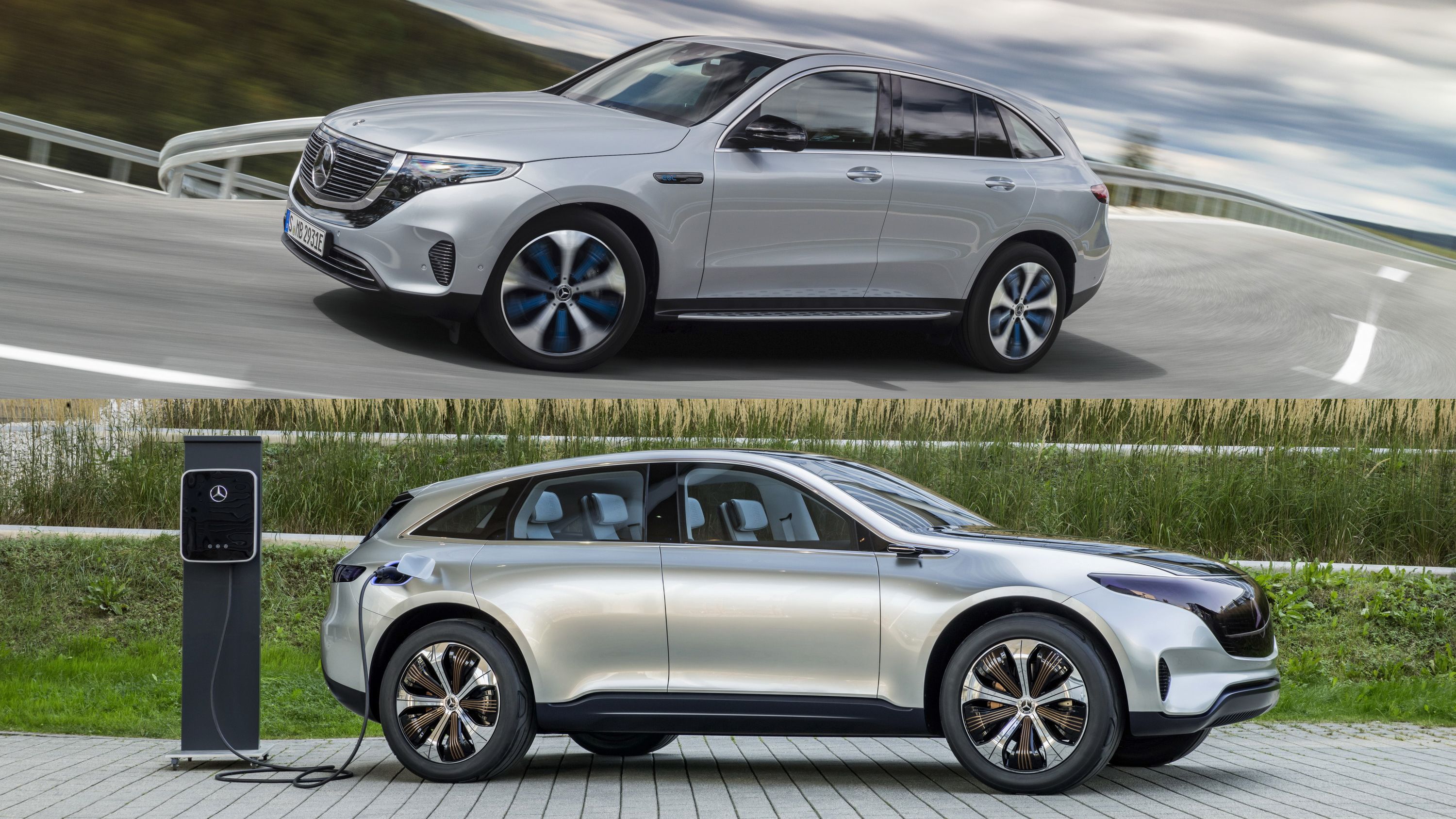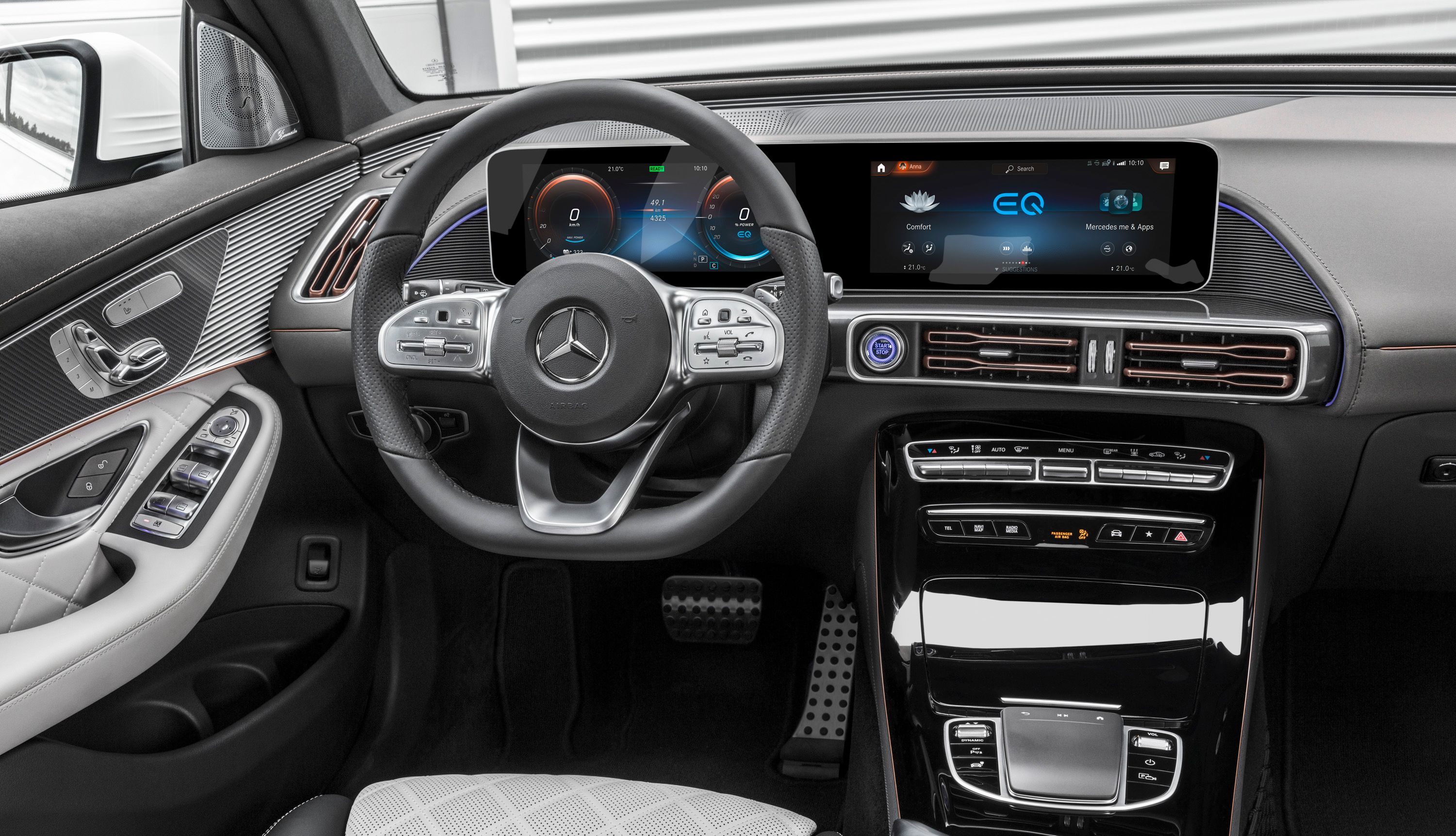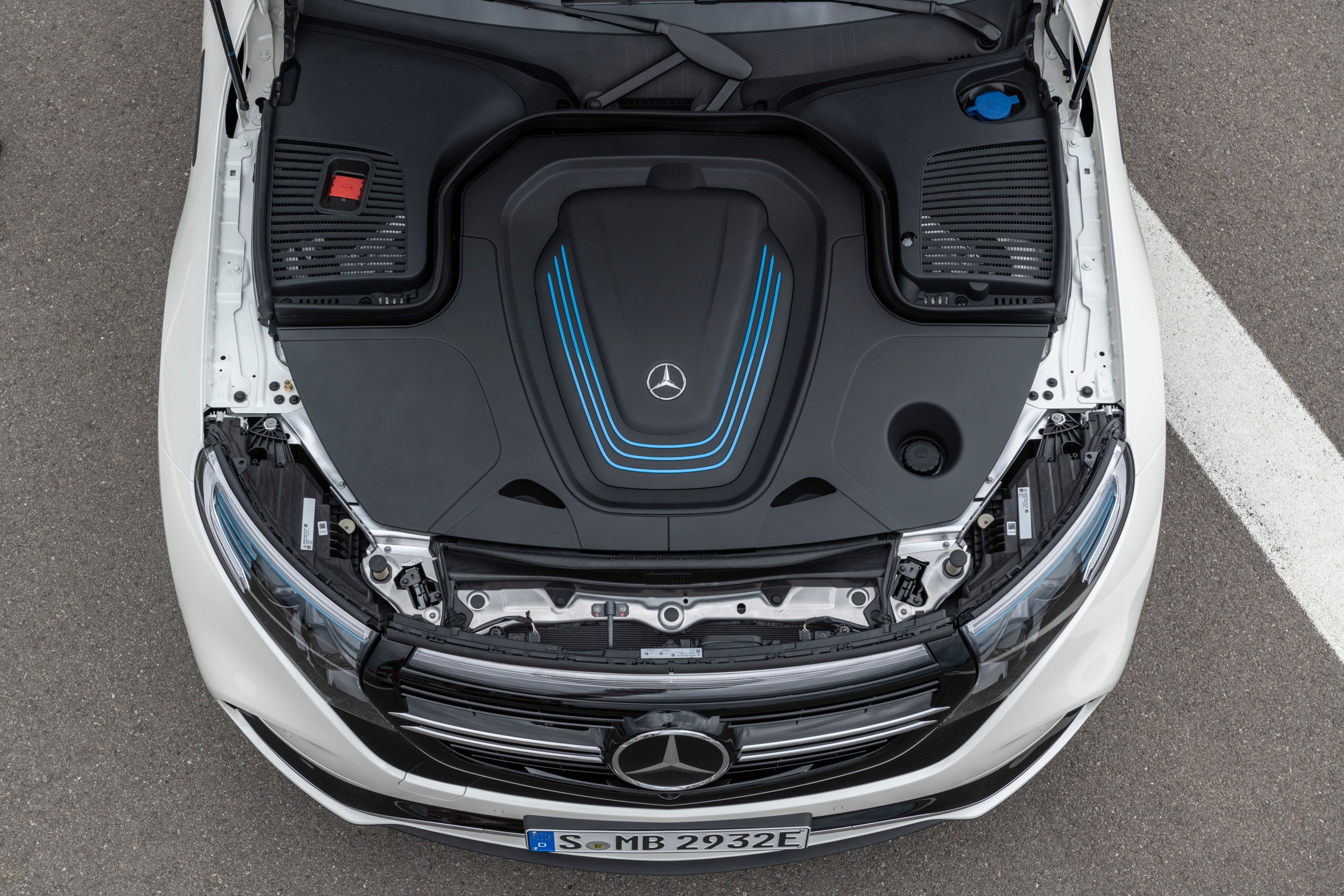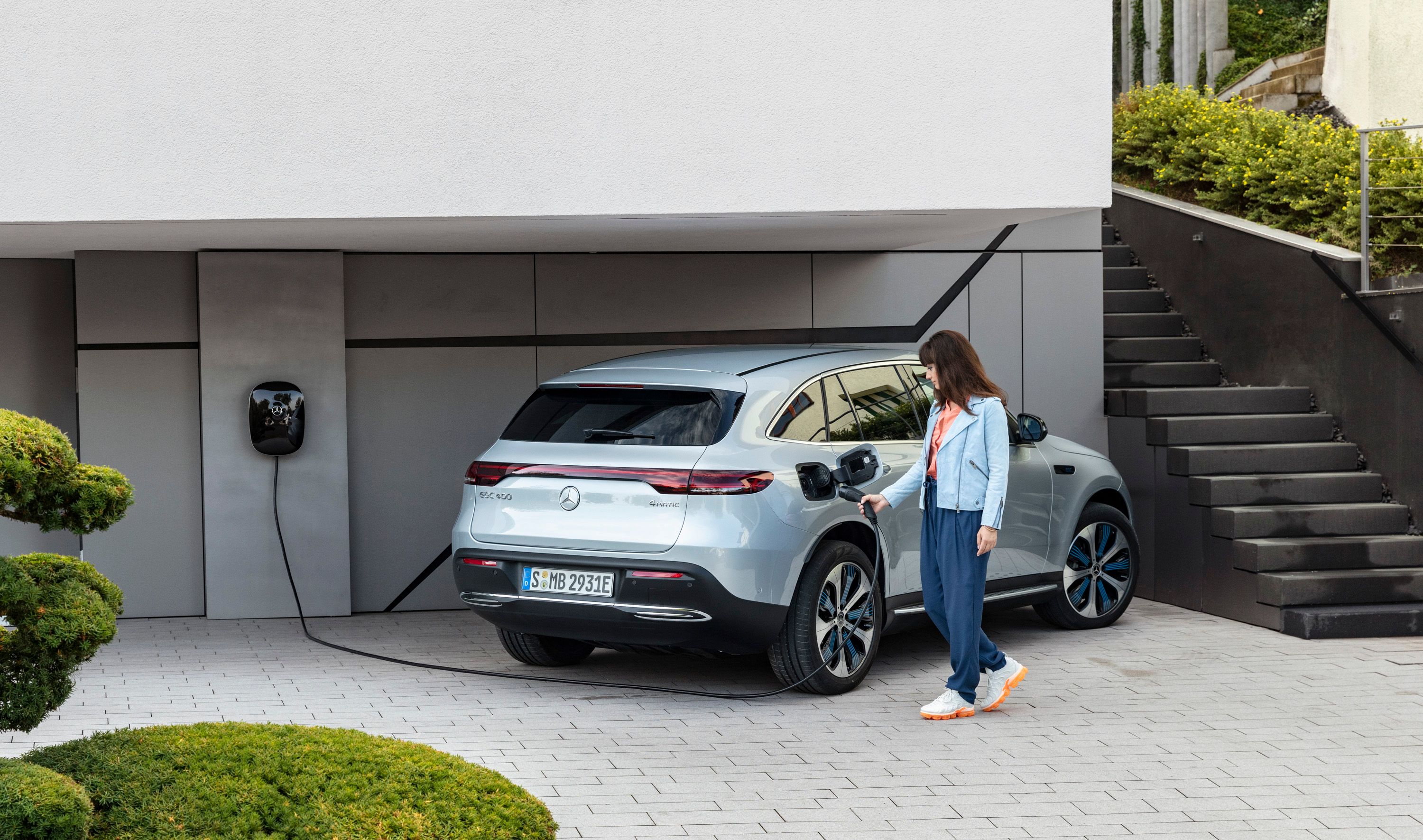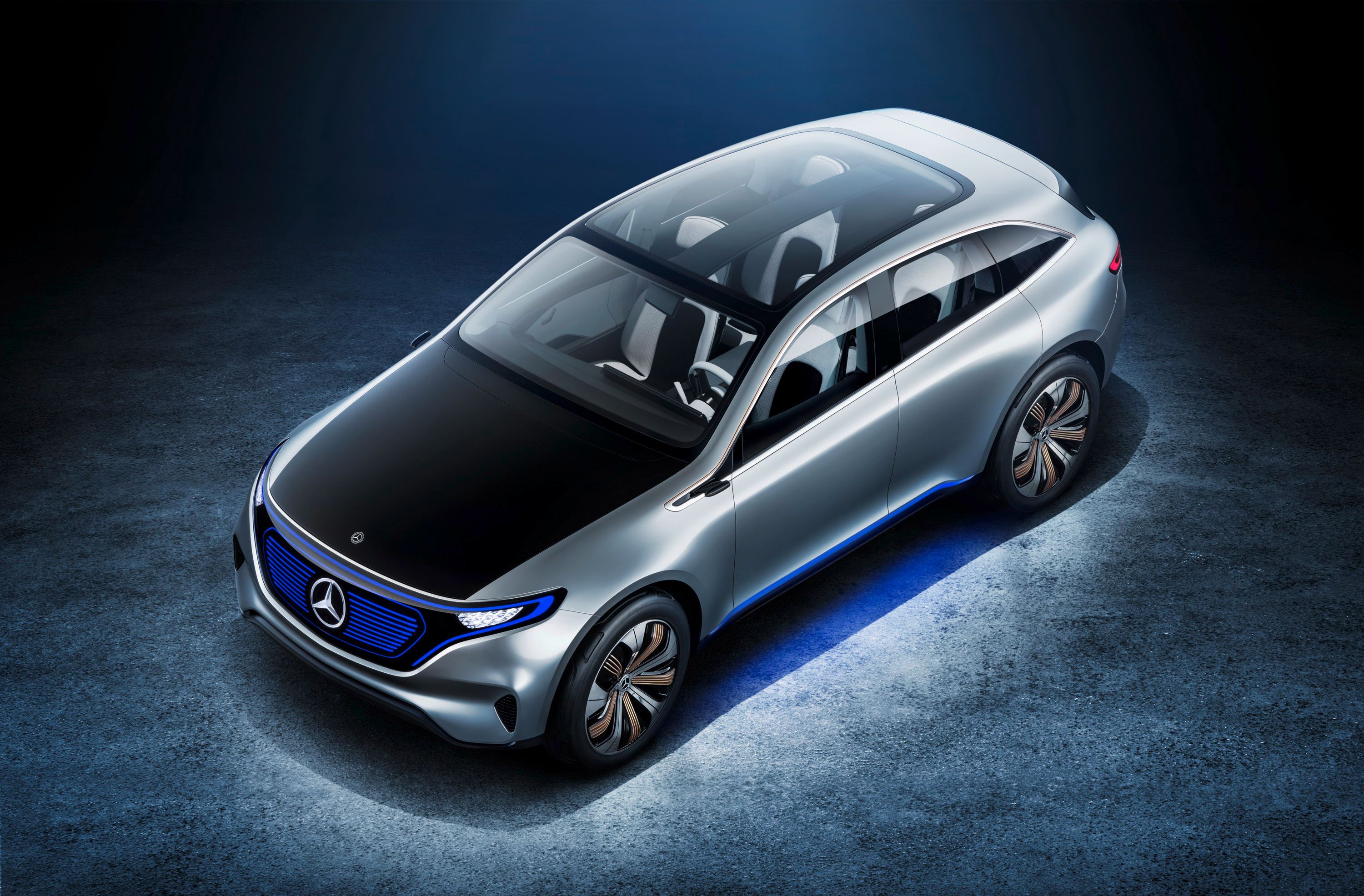The Mercedes EQC was finally unveiled by Mercedes-Benz, and while it does share a number of styling cues with its concept counterpart, the Generation EQ Concept, you’re not going to mistake one for the other. That’s to be expected; the concept still looks far more dynamic than the production model. The latter, on the other hand, looks a lot more like what you’d expect from a production version. It looks safe, conservative, and, well, it’s not as visually arresting as we hoped it would be.
Mercedes EQC Visual Comparison
Mercedes-Benz left a lot on the table. That was our first reaction when we saw the Mercedes EQC for the first time.
Front
|
|
ids=794284,794285 |
no_overlay=true> |
The front section of the electric crossover is a good example of what we mean by "leaving a lot on the table." While the layout of the front is largely similar to the Generation EQ Concept, how Mercedes filled up the spaces left a lot to be desired.
Notice how the face of the concept comes from one panel that covers a majority of the section’s surface area? It’s a sleek design that elevates the look of the Generation EQ.
Granted, the illuminated grille wouldn’t have worked on the production model for functional reasons, but the surrounding parts look far more conservative than we expected. The chrome grille surround would’ve been better if it wasn’t included in the crossover. Not only does it attract more attention than it should, but it also breaks the light bar that was one of the concept’s best features. While we’re here, Mercedes wasted that space below the front grille. It’s just an empty black panel that could’ve probably been used for something functional. The headlamps are another issue. I’m sure there’s a lot of technology behind it, but they look boring compared to the concept’s own headlamps. Come to think of it; they’re shaped similarly to the headlamps of the 2013 Ford Explorer. I don’t think that’s a comparison that Mercedes wants.
The front bumper and the intakes are fine, but for the most part, Mercedes could’ve done a lot more to justify what my colleague, Robert Moore, said about the Generation EQ Concept. "This is probably one of the sexiest and down-to-earth front ends that we’ve seen on an all-electric concept," Rob said.
It's too bad the EQC's front section doesn't live up to the billing.
Side
|
|
ids=794286,794287 |
no_overlay=true> |
The side profile is arguably the best side of the Mercedes EQC. Take that how you want, but considering how disappointing the front section is, the side section is a win for the electric crossover. This is one of those rare instances where the production model actually looks better than the concept, at least from this specific angle.
The Generation EQ Concept, for example, only has one body line, a product, it seems, of Mercedes wanting the concept to look as smooth as possible. On the other hand, the production EQC has a number of body lines that give the crossover more character. Those lines play well with the overall profile of the EQC, specifically creating unique layers that make the crossover look muscular. The shoulder line just above the rear arches provides a good example of that.
The roof of the EQC is also more robust than the concept.
On the other hand, the high-gloss aluminum window surrounds are still there. Over on the passenger side, the charging port can be found just ahead of the taillight. On the other side, the Mercedes’ EQ badging sits just behind the front wheel arches.
Then there are the wheels, which, for my money, is the best design element of the Mercedes EQC. The design is top-class, highlighted by the contrasting silver and blue spokes. There’s a lot of personality in the crossover’s wheel design. Glam photos of the EQC also reveal an alternate wheel design that has more spokes than I care to count. That design also looks good on the EQC.
Rear
|
|
ids=794288,794289 |
no_overlay=true> |
The rear section of the EQC carries a bit of the design language of the Generation EQ Concept, but only to a certain extent. The taillights on the production crossover stretch from side-to-side, but the design — and subsequent lighting effect — is different compared to the concept. It’s not that big of a deal because it still succeeds in making the crossover look wider than it is.
Overall, the rear section of the Mercedes EQC is what it is. It’s not sexy or exciting, but it’s not boring, either. It just sits somewhere between “decent” and “good.”
Mercedes EQC Interior Comparison
|
|
ids=794290,794183 |
no_overlay=true> |
The interior of the Mercedes EQC is a lot different from the interior of the Mercedes Generation EQ Concept. That’s a massive understatement, but what do you expect, really?
Let’s start with the obvious. The glass roof on the concept is gone in the production model. No surprises there. The thin sports seats are also gone, replaced by more traditional seats that feature indigo blue or beige centers with “Sunnyvale” upholstery that is constructed from recycled material.
The layout of the central tunnel is also different, specifically the presence of the center stack that connects the tunnel to the dashboard. The concept featured a floating dashboard that barely had anything besides the absurdly long digital display that doubled as a digital instrument cluster. Even the illuminated lights on the concept that wrapped itself around the cabin are M.I.A. on the production model. Bummer, right?
Now, for the good news.
The dashboard looks busier than the one on the concept, but not by much. The same stretched digital display is now made up of two 10.25-inch displays that sit side-by-side together. Visually, it still looks like one long display, which is a big part of its charm. More importantly, though, is that the whole package is part of Mercedes’ new MBUX system, which includes, among other things, a new user interface, natural speech recognition, and touch screen capabilities.
There’s a lot to like with the interior of the Mercedes EQC, even if it doesn’t have the all-glass roof that the concept version had.
Mercedes EQC Performance Comparison
The tale of the performance tape between the Mercedes Generation EQ Concept and the Mercedes EQC looks like two similarly gifted fighters that have more in common than any of us realized.
First, let’s look at the Generation EQ Concept.
According to Mercedes, the Generation EQ Concept can sprint from 0 to 62 mph in under five seconds. More importantly, it also has a range of 310 miles and the ability to get 62 miles worth of juice after just five minutes of charging. The numbers are all impressive, but how do they compare to the production model, the Mercedes EQC?
The Mercedes EQC compares favorably to the Generation EQ Concept in some ways. It has, for instance, an 80 kWh battery, which, depending on how you translate the concept’s “over 70 kWh” capacity, is “at least” 10 kWh more than the concept’s battery. The production model also has two asynchronous motors located in the same areas as the concept model.
Up until this point, it looks like the production model has a performance advantage over its concept counterpart. While that may be true in some respects, the EQC does fall short in a number of important categories with range being the most important of all. Unfortunately, the production all-electric crossover only has 200 miles range, which represents just two-thirds of the concept’s 310-mile “range.” Granted, the latter’s range is an arbitrary number that Mercedes threw out to make the Generation EQ Concept more exciting, but 200 miles is still a big drop from 310 miles.
There’s also the charging time. Apparently, the Mercedes EQC can’t charge back to 60 percent capacity in just five minutes. Instead, it can, in the best of conditions, charge back to 80 percent capacity in 40 minutes. Just like the range, Mercedes may have oversold how fast the EQC can get its juice back.
Further Reading
Read our full review on the 2020 Mercedes-Benz EQC.
Read our full review on the 2016 Mercedes‑Benz "Generation EQ" Concept.
Read more Mercedes-Benz news.

